How-To: Jumps with Jay Marmont
Multiple Aussie MX and SX champ, CDR Yamaha’s Jay Marmont, explains the finer points of safely escorting your motorcycle into the air, and the advanced techniques the Pros use to reduce lap times. This article originally appeared in Transmoto Dirt Bike Magazine‘s 2011 April (#7) Issue. Click the links for a recent video we produced with Jay, titled ‘What It Takes’, and an interview with CDR Yamaha team principal, Craig Dack.
Watch the stars of Crusty Demons, Nitro Circus and Super X and you’re left with the impression that we’re all born with jumping skills. Sadly, we aren’t. Once a mere mortal leaves the ground, gravity dictates that touchdown with terra firma is inevitable. And when you take to the air with a motorcycle, there’s a whole raft of techniques required to ensure that touchdown is a controlled and safe one.
Jumping is one of the biggest attractions of riding dirt bikes, but botched landings are one of the major causes of injury in the sport – whether you’re a motocross racer or trailrider. Which is exactly why we thought it was a good time to revisit the right and wrong techniques of jumping a dirt bike.
CDR Yamaha’s Jay Marmont, explains the fundamental principles of approach, take-off, mid-air technique and landings. He also reveals an eye-opening insight into the advanced techniques Pro riders use avoid crashes and reduce their lap times.
The Basics
Learning any skill is best done by breaking it down into its key elements, and jumping a dirt bike is no different. These are the four basic areas of jumping you need to focus on getting right, whether you’re hitting an erosion mound on the trail or nailing a 25-metre triple on a supercross track.
Approach – This is the most important part of the jumping process. If you don’t get the approach right, you’ll be in for the ride of your life … followed by some serious soil sampling! Vision is key. You need to be looking far enough ahead to be able to take the cleanest approach and take-off line, as this will ensure that the rest of the jump is as predictable as possible. If the line you choose has ruts or a rough, uneven take-off ramp, it can all go wrong very quickly. Look for a smooth line with plenty of traction.
Take-Off – By now, you are on the cleanest line and hitting the up-ramp. This is where any previous experience will count. You need to be in the right gear and holding a steady throttle position in the 60 to 90% range. Never shut off the throttle on the up-ramp as this will send the nose down. Your weight needs to be in the centre of the bike and you need to be standing in the attack position. This type of take-off attitude will get you safely across most obstacles.
Mid-Air – This is the time most racers take the opportunity to relax – pulling tear-offs or adjusting clutches is done while in the air. If you’ve got the approach and take-off right, you’ll be flying through the air in a neutral position; in full control and with both wheels at the same height. At this point, you can shut off the throttle and focus on the landing. Remember that shutting off the throttle will make the rear wheel rise a little. The simplest tip for mid-air control is to move your body forward or back to change the angle of the bike, depending on how you need to land.
Landing – Here’s the hard part. Get this wrong and you’ll have a story to tell when you regain consciousness. As you drop onto your landing position, give the bike some throttle as it’ll help the suspension absorb the landing. Your body will also have to absorb the landing, so make sure that neither your arms nor legs are locked straight as this may cause serious injury on bigger jumps. Ride the landing out with your head up to spot the next obstacle.
Tabletops
Tabletops are found on most MX and SX tracks, and some grasstracks and bush trails. They consist of an up- and down-ramp with a flat section in between, which gives you an added safety margin if you don’t make the entire distance from ramp to ramp. As a general rule, tabletops are used to gain experience for more challenging jumps, such as doubles and triples, as you can jump halfway and slowly progress to the whole distance.
“Look for the smoothest approach line as this will keep you from having to adjust the throttle or your riding position on the up-ramp. I like to stay on a line that lets me maintain consistent throttle all the way up the ramp, as this helps settle the bike for the launch. Making any changes on the up-ramp will increase the chance of breaking traction, which can send you sideways and over the bars. It’s vital to get on the gas early and stay on it until you’ve left the ramp. In the air, focus on the landing as early as you can, and whether you need to think about braking for a turn or getting on the throttle quickly. Most of the time, it’s good to land with the throttle on. It firms up the shock to help absorb the impact. For the tabletop sequence shown on the previous spread , I take off using the seat bounce method, which I’ll explain later.”
Singles
Single jumps – or ski jumps, as they are often called – come in many shapes and sizes. Just remember that if you follow the basic approach and flow – as set out in the Fundamentals – you’ll be safe and ready to conquer any single. Always try to jump a single from the lowest part of the jump, as this will ensure you’re off the ground for the shortest time possible.
Doubles
Double jumps are increasingly appearing on motocross tracks these days as clubs look to reduce average track speeds. Doubles are no more difficult than tabletops, though they do have greater consequences if you come up short. Which is why many riders second-guess themselves on the up-ramp of double jumps, making the bike unstable on take-off. But with experience comes confidence. So if you’ve sorted a 10-metre tabletop, then simply apply that experience to understand the take-off speed required for a 10-metre double.
“Doubles require the same approach as tabletops. To determine the right approach speed, you can follow someone into the jump to gauge their speed or jump off to the side of the track to gauge where you will land. Once you get a feel for the speed required to clear the distance, use a good, clean line and maintain both your throttle application and attack stance on the bike to make sure you launch predictably. Once in the air, shut off the throttle to help angle the bike’s front wheel down for the landing ramp, and get your weight centralised on the bike. In the sequence, I’ve used a small mono to launch front-wheel-high off the up-ramp to help gain the distance needed to make the down-ramp.”
Aerial Adjustments & Damage Control
Body – In most conditions just your body’s movement forward or back will change the attitude of the bike. If you lean forward, the nose will drop. If you lean back, the rear-end will drop. You can also use your legs to keep the
bike straight in the air. This is done by pushing your knee hard into the shroud on the side of the bike that needs straightening.
Brake – The rear brake is used to raise the rear of the bike and angle the nose down to match the down-ramp angle. To do this, pull the clutch in and dab the rear brake pedal. You’ll instantaneously feel the rear of the bike rise, when you may need to counter the movement with your body position. By the way, grabbing the front brake in mid-air is not advised.
Throttle – The throttle is used to lower the rear of the bike. This is done by simply twisting the throttle and keeping the revs up. You often hear this panic-rev noise at supercross events when a rider feels that the bike is too nose-down in the air. The rider leans back and gives it all he’s got in order to stop the bike over-rotating.
“Every now and then, things will go wrong on the up-ramp and send you into “holy-shit” mode. This might be caused by getting cross-rutted, losing traction or colliding with another rider. During the 2010 MX Nats, Greg Smith snapped this sketchy sequence of me two laps from the end of the final moto. There were two ruts for this particular jump at Canberra. I was taking the outside rut because its lip was a bit smaller than the one on the left side, and I was throwing a slight scrub on the jump to stay low. On that one lap, my front wheel went into the left rut and my rear wheel broke loose on the up-ramp, sending the bike totally sideways. I knew the only thing I could use to straighten it up was the throttle and to force my knee into to right shroud. So I kept the throttle wide open and hoped the bike wouldn’t get away from me too badly. I honestly don’t think that I lost any time on that jump. I was one of those moments were it could have all gone very wrong. But I saved it and can laugh about it now.”
The Scrub
Introduced in the ’90s, the scrub has revolutionised the world of jumping and racing. It’s a very advanced technique that is used to stay low, but still give you enough distance to clear the jump adequately. This saves time during the course of a lap by decreasing the amount of airtime so you can get back on the ground and on the gas. Everything that you have read so far has to be thrown out the window in order to perfect the scrub – except the confidence part.
“As I approach the jump, I’m going faster than I regularly would for this type of jump. At the base of the ramp, I shut the throttle off completely. The excess approach speed makes the bike compress and then rebound mid-way up the ramp. This launches the bike into the air earlier than the lip of the take-off ramp. A scrub is then achieved by sliding both wheels out, creating a trajectory over the lip of the jump with a lower take-off point than the original. In the air, the bike will generally require some manhandling to bring it back straight enough to land. This is done by pulling the bike back into line with your outside leg. Getting on the throttle will also help bring the back wheel down. The scrub is a hard technique to master properly, but one that can reward you with quicker lap times.”
Triples
Triple jumps are usually found on supercross tracks, and they are recommended for experienced riders only. Triples are approached in much the same way as doubles, only the overall distance is generally far greater. Most riders start out by jumping them in a double-single sequence to help gauge the distance required. Triples are for riders who are already extremely confident over tabletops and doubles, and are ready for more of a challenge. If you aren’t sure of the speed needed, follow another, more confident, rider over the jump. And remember to commit to the jump all the way through, not just to the up-ramp. If you come up short on a triple, you will get hurt, so it’s better to over-jump than under-jump a triple on your first attempt.
Step-Ups
Step-ups are often used to get a rider to the top of a rise in the track. They are approached in much the same way as all other types of jumps – attack position, nice and steady throttle and lots of confidence. The important thing to remember with step-ups is that the jump is at its most dangerous the moment you leave the ramp. The further you climb up the rise, the closer you get back to the ground. Some riders can actually stop immediately as they hit the ground due to how soft the landing can be.
“With this step-up, I use a seat bounce to propel me high enough to get over the point of the rise and into the braking area. It’s a relatively advanced technique and one that I use on lots of jumps. On approach, I choose the shortest and smoothest line so I can be seated during the up-ramp. A combination of blipping the throttle and a rebounding suspension on take-off sends the bike sky high. In the air, I move my weight forward on the bike to bring the front-end down for the landing, and this really helps with the braking for the next turn. It will take some time to master this technique at first. But once you have, you’ll find it very useful for lots of scenarios.”
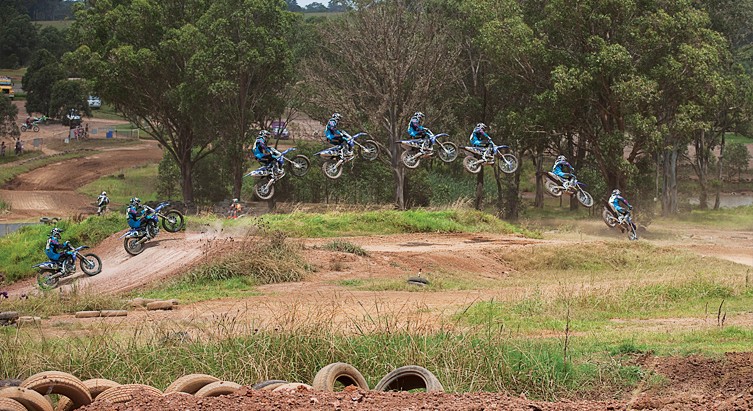
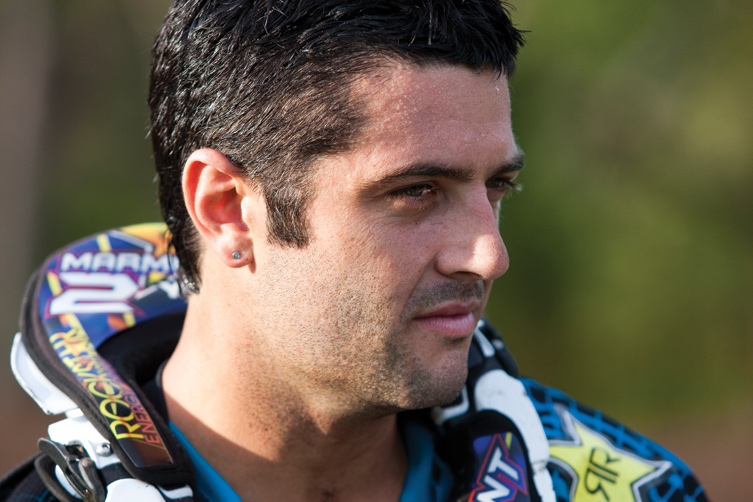
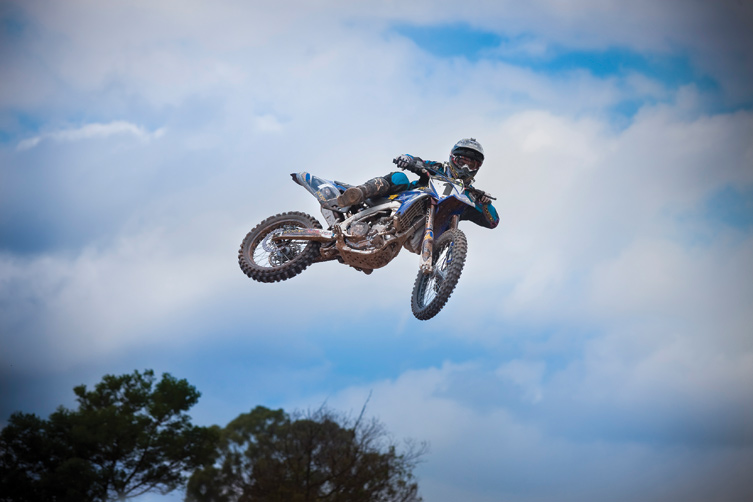
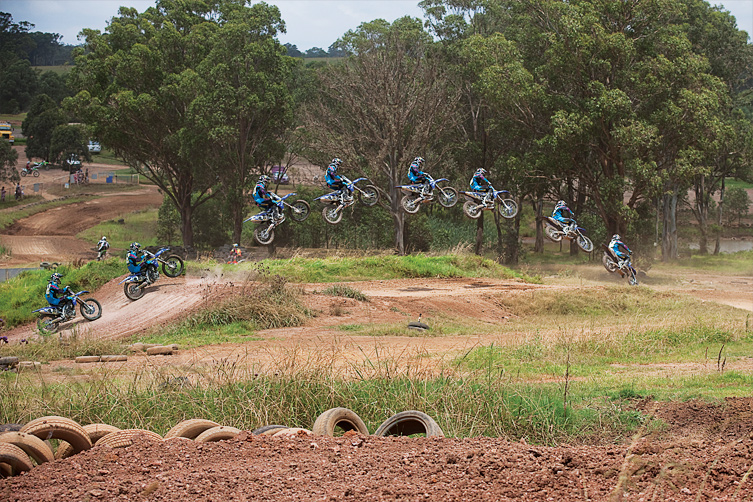
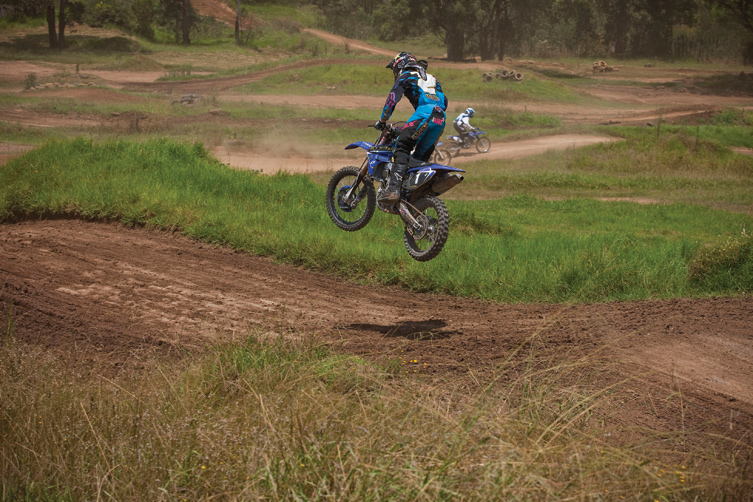
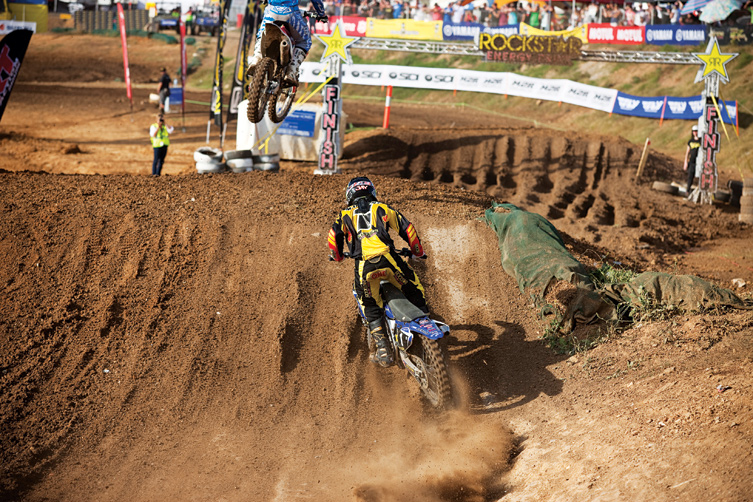
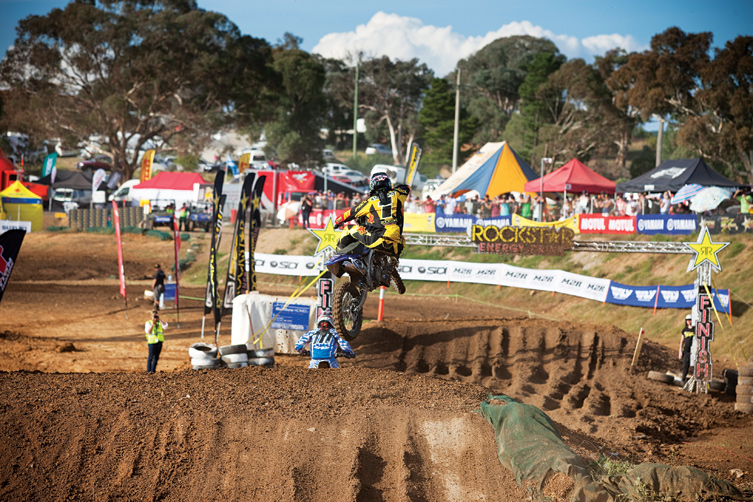
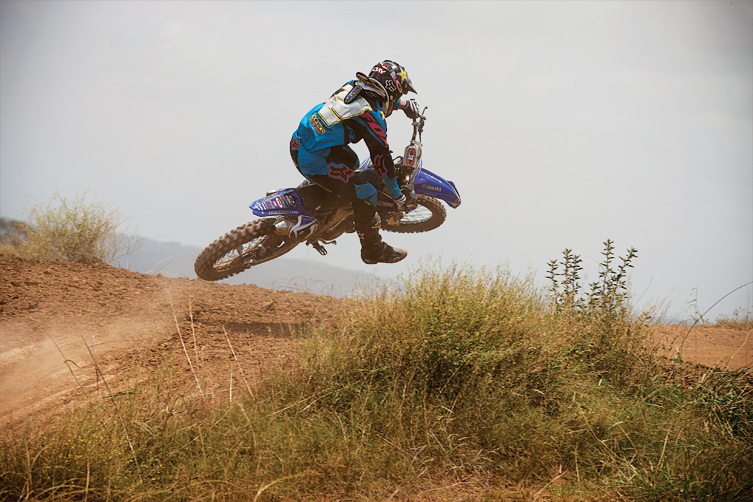
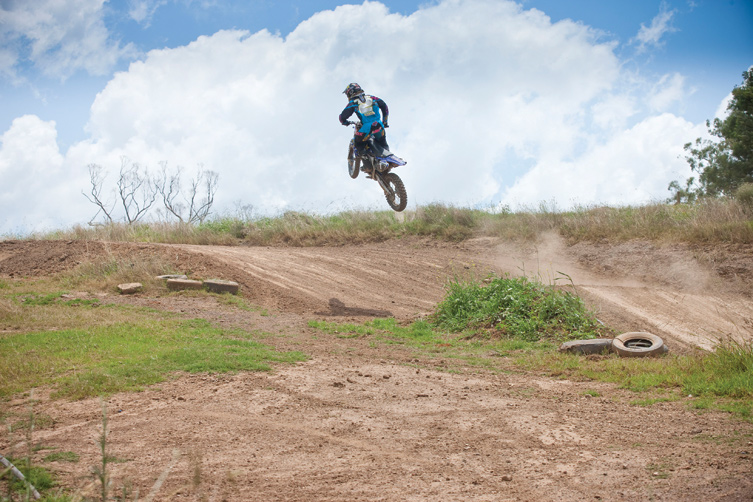





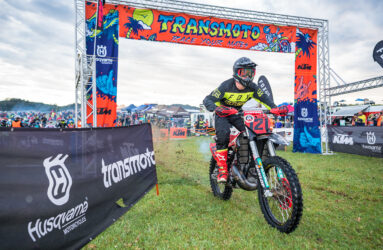


Be the first to comment...